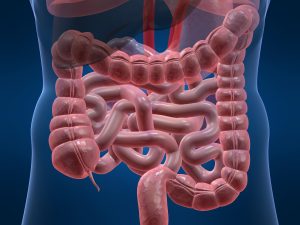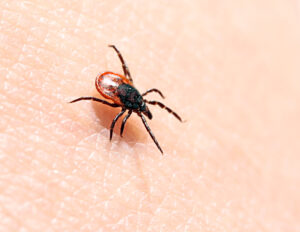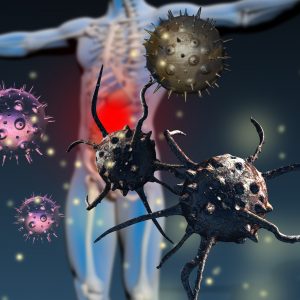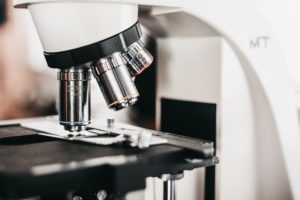
Leaky Gut, Chronic Disease, & Long Term Health
Leaky Gut This blog discusses the very important health issue of leaky gut. You will learn: What is the gut & the gut microbiome What
If you are a doctor or clinician looking to make a bigger impact on the world, have more job satisfaction and have up-to-date protocols and treatment solutions for your patients, check out our free functional medicine training led by functional medicine expert, Dr. Miles Nichols below.
Plus additional BONUS training videos on treating tough cases of brain fog and cognitive impairment!!
Are Dementia and Alzheimer’s Disease Linked to Lyme Disease and/ or Mold Illness?
In this blog, you will learn:
Screening for biotoxin exposure, and treating it if present, can help resolve or partially resolve some cases of Alzheimer’s and Dementia
Do your clients suffer from dementia, poor memory or neurodegenerative symptoms? Do they have difficulty performing normal daily activities? Then this blog is for you, as we present the missing link to treating Alzheimer’s Disease (AD). Please read on for the details!
Do you get stuck clinically with symptoms of dementia or AD with your patients? Would you like to have a larger impact on improving cognitive function? The key to Alzheimer’s treatment is an individual approach using diet, lifestyle, nutrition, exercise and brain health. Alzheimer’s incidence is rising so you’re definitely going to see it in your patient population.
If you want to improve your patient’s quality of life, you need a customized approach to address each patient’s unique needs. Our functional medicine course will teach you how to do this. Look into our functional medicine school (mindbodyfunctionalmedicine.com): we will educate you to have a greater impact on improving your client’s lives.
** Please note: If you want the short summary version of this article, then please click here **
Alzheimer’s Disease Facts:
Old School Thinking about Alzheimer’s Disease:
AD has been historically looked at from the “amyloid cascade hypothesis” (Fulop T, 2018). The disease is characterized by the presence of beta amyloid (Aβ) plaques in the brain (Seaks CE, 2020). It is thought that the amyloid plaques come first. They are produced pathologically and are the cause of AD (Fulop T, 2018). The plaques accumulate, cause neuronal death (i.e., neurodegeneration) and neuroinflammation (Fulop T, 2018). Current conventional medical treatment focuses on breaking down these amyloid plaques.
However, this approach has been not been successful. Clinical trials to decrease Aβ plaques have not worked and there is currently no effective treatment for AD when following conventional medicine (Seaks CE, 2020). This is because the amyloid plaques are not the root cause of AD. They are a symptom, and as we will see later, are even a protective measure against the true root cause(s) of AD.
This Peptide Can Improve Healing. Learn:
Do your clients suffer from infections, poor wound healing or inflammation? Do they have issues such as chronic diabetic foot ulcers? Then meet an anti-microbial peptide called LL37 that can help! Like other peptides, it can provide a novel remedy to health issues. LL37 is especially great for infection, inflammation & healing. Please read on for the details!
Do you get stuck clinically knowing how to reverse chronic infections with your patients? Would you like to have a larger impact on working with inflammation or wound healing? Learn how to break down biofilms that prevent wound healing. Learn another tool to treat inflammation and modulate immunity in your patients. Look into our functional medicine school (mindbodyfunctionalmedicine.com): we will educate you so you can have a greater impact on improving your client’s lives.
** Please note: If you want the short summary version of this article, then please click here **
We have recently written many blogs about peptides. To recap, a peptide is a small protein, made up of a chain of amino acids. They can be used therapeutically to help with different health conditions. Click on the links to see our articles on peptide therapy, HGH, CJC 1295/Ipamorelin, BPC 157, PT 141, Ta1, VIP, Thymosin Beta 4, KPV, Trio, SS-31, DSIP, Selank, Dihexa and Kisspeptin.
LL37 is an antimicrobial peptide. It has antibacterial, antiviral, antifungal, antibiofilm, immune modulating and anti-cancer properties (Wang G, 2019).
The Applications & Benefits of LL37 include: (Chen X, 2018) and (Uhlmann J, 2016)
Wound-Healing& Antimicrobial Properties
LL37 is antimicrobial against bacteria, fungi, viruses and parasites, including multiple Gram-positive and Gram-negative bacteria (Duplantier AJ, 2013). Gram-positive and Gram-negative are a way to classify bacteria, based on the thickness of the bacteria’s cell membrane.
LL37 has wound-healing effects and is increased in response to cuts, scratches, scrapes, bruises and swelling (Duplantier AJ, 2013) and (Uhlmann J, 2016).
LL37 is produced by many cell types including macrophages, natural killer cells and epithelial cells of the skin, airways and intestine (Kahlenberg JM, 2013). In the skin, LL37’s antimicrobial effects prevent invasive bacterial infections (Kahlenberg JM, 2013).
But LL37’s Effects may not all be Good
LL37 can strengthen bacterial virulence factors (Uhlmann J, 2016). At lower doses which do not inhibit pathogens, LL37 can lead to an upregulated virulence expression of the Gram-positive bacterium S. pyogenes (Uhlmann J, 2016). At low doses, it seems LL37 can encourage big changes in bacteria, sometimes resulting in increased pro-inflammatory activity (Uhlmann J, 2016).
High concentrations of LL37 were found in the skin biopsies of patients with S. pyogenes infections (Uhlmann J, 2016). LL37 was in the infected tissue and positively correlated to the bacterial load. It seems that, despite a high concentration of LL37 in the infected tissue, LL37 did not substantially help in killing the bacteria (Uhlmann J, 2016).
AntiViral
LL37 has antiviral properties against many viruses, both naked and enveloped. The envelope of a virus is the outermost layer of the virus which protects its genetic material. LL37 can inhibit both types of viruses and their replication, especially in the skin (Chessa C, 2020). It also has indirect antiviral activity through modulating the immune response (Chessa C, 2020).
The skin is a physical barrier, defending against viruses (Chessa C, 2020). LL37 is produced by keratinocytes, the cells of the epidermal outermost layer of skin. When a virus is present, keratinocyte cells sense the virus and secrete different antimicrobial peptides, including LL37 (Chessa C, 2020). They then mount an immune response using pro-inflammatory cytokines, chemokines and antimicrobial peptides.
LL37 is secreted in response to common viruses like (Chessa C, 2020):
Plus additional BONUS training videos on treating tough cases of brain fog and cognitive impairment!!
How does LL37 Inhibit a Virus?
LL37 blocks the virus from entering the cell and by affecting viral replication (Chessa C, 2020). Viruses exposed to LL37 show a disruption of the viral envelope (Chessa C, 2020). LL37 binds the virus envelope protein which inhibits its entry into the host cell (Chessa C, 2020).
LL37 significantly decreases active virus particles (Chessa C, 2020). It can lead to clumping of the virus and prevent cell infection (Chessa C, 2020). It can also inhibit virus attachment to its receptor at the cell surface and block the viral activity.
LL37 has prevented HSV-1 (herpes) infection by blocking viral-cell attachment (Chessa C, 2020). LL37 has other MOAs against viruses but they are too numerous and too complex to detail here.
Biofilms
LL37 is especially effective with polymicrobial infections or biofilms (Duplantier AJ, 2013). Polymicrobial infections are wounds that are colonized by bacteria and fungi, forming polymicrobial communities called biofilms. This is especially problematic when wounds become chronic. Microbial biofilms delay healing (Duplantier AJ, 2013). LL37, applied directly to the wound, can help treat polymicrobial wounds (Duplantier AJ, 2013). Low concentrations of LL37 can prevent biofilm formation and higher concentrations of LL37 can kill existing biofilms (Chen X, 2018).
Diabetes Type 2
Bacterial biofilms inhibit wound healing and promote infection. Opportunistic pathogens sometimes infect open wounds like chronic diabetic foot ulcers (Duplantier AJ, 2013).
Foot ulcers are a common complication with diabetes. A diabetic foot ulcer can form due to peripheral neuropathy (nerve damage) and lack of blood flow, caused by peripheral artery disease (Andrews KL, 2015). A significant number of diabetic patients who develop a chronic foot ulcer end up needing an amputation (Andrews KL, 2015):
The immune system doesn’t fight biofilms well. It cannot get behind the biofilm to kill the invading pathogens. This is often due to poor circulation in diabetic patients. Antibiotics cannot break through the biofilm so they don’t work. Or the wound may be colonized by antibiotic-resistant strains. The result can be chronically infected wounds with biofilms, that damage the limbs of diabetic patients (Duplantier AJ, 2013).
With the increase in type 2 diabetes, these life-threatening infections are also increasing. So, anything that can prevent the development and worsening of these wounds would be very important to avoid amputation.
LL37’s Role in Biofilms & Diabetes
A combination approach of thoroughly cleaning the wound, systemic antibiotics and topical anti-biofilm substances can reduce biofilm and heal the wound (Duplantier AJ, 2013). When the biofilm is broken down, the infecting bacteria are unprotected and cleared by the immune system and antibiotics. LL37 is a new topical therapy to break down biofilms (Duplantier AJ, 2013).
Immunomodulatory
LL37 is immunomodulatory (Kahlenberg JM, 2013). The immune response is influenced by many factors, including the microenvironment and disease background of the patient (Kahlenberg JM, 2013).
How is LL37 Immunomodulatory?
LL37 has chemotactic properties (Kahlenberg JM, 2013). Chemotaxis is when an organism moves in response to a chemical stimulus. Cells, bacteria and other organisms make movements according to chemical stimulus in their environment.
LL37 encourages migration of immune system cells; neutrophils and eosinophils (Kahlenberg JM, 2013). Certain receptors are also activated by LL37, which stimulate keratinocytes to migrate and heal wounds (Kahlenberg JM, 2013).
LL37 modulates the production of chemokines (a cytokine immune cell). Chemokines play a role in cell migration and promote chemotaxis (Oldham K, 2020). When LL37 is released at the site of infection or injury, it stimulates chemotaxis and activates the inflammatory response to repair the wound (Kahlenberg JM, 2013).
Inflammation
LL37 can increase or reduce inflammatory signals, depending on the situation, cell-type and microenvironment of the particular cells (Kahlenberg JM, 2013). As an anti-inflammatory effect, it results in lower levels of pro-inflammatory cytokine production (Kahlenberg JM, 2013). Alternatively, depending on the situation, LL37 can be pro-inflammatory, stimulating IL-1β, IL-18 and other pro-inflammatory molecules (Kahlenberg JM, 2013).
LL37 & Autoimmunity (AI)
Sometimes the immune system can get overstimulated. It can make a mistake and attack the body’s own tissues or organs. There are over 100 known autoimmune conditions. LL37 plays a role in AI, as it is both pro- and anti-inflammatory. As a pro-inflammatory, it increases inflammation and can contribute to the development of autoimmune diseases (Kahlenberg JM, 2013)
Psoriasis
Psoriasis is skin inflammation. LL37 can possibly contribute to psoriasis (Kahlenberg JM, 2013) and (Lande R, 2014). LL37 levels are elevated in psoriasis and is recognized as an autoantigen (Kahlenberg JM, 2013). An autoantigen is a ‘self’ antigen, that is part of normal tissue. But it can stimulate autoantibody production, as in an autoimmune reaction. LL37 is seen as an autoantigen by the T cells in 46% of psoriasis patients (Lande R, 2014). LL37-specific T cells produce pathogenic cytokines. This happens in moderate to severe psoriasis (Lande R, 2014). It is an example of how LL37 can stimulate immune cells in autoimmunity (Lande R, 2014) and activate inflammatory pathways (Kahlenberg JM, 2013).
LL37 can also be anti-apoptotic, preventing programmed cell death. This can possibly contribute to the increased cellular proliferation present in psoriasis (Kahlenberg JM, 2013).
Systemic Lupus Erythematosus (SLE) / Lupus
SLE is the most common type of Lupus, an autoimmune disease. LL37 has a role in stabilizing immune complexes in SLE (Kahlenberg JM, 2013). Immune complexes are molecules made from multiple antigens binding to antibodies to form an antigen-bound antibody. They can play a pathogenic role and occur in inflammatory conditions like Lupus. Lupus patients typically have autoantibodies to LL37, contributing to immune complex formation (Kahlenberg JM, 2013).
The pro-inflammatory effects of LL37 on macrophages potentially contribute to Lupus (Kahlenberg JM, 2013). LL37 stimulates inflammatory activity, raising IL-1β and IL-18 (Kahlenberg JM, 2013). Elevated IL-18 promotes the inflammatory cycle, resulting in disease development or flare-up (Kahlenberg JM, 2013). LL37 is upregulated in Lupus lesions and its effects on the lesions are unknown (Kahlenberg JM, 2013).
Arthritis
LL37 may contribute to arthritis and is elevated LL37 in Rheumatoid Arthritis (RA) (Kahlenberg JM, 2013). LL37 induces apoptosis of osteoblasts, possibly contributing to reduced bone formation in arthritic joints (Kahlenberg JM, 2013). Periarticular osteopenia is common in RA and is often the earliest sign of RA seen in radiology (Alenfeld FE, 2000). It could be a result of higher LL37 levels (Kahlenberg JM, 2013).
Gum disease and RA are associated (Kahlenberg JM, 2013). A gum infection can damage soft tissue and destroy the bone that supports teeth. Treating gum disease can improve RA markers. LL37 may be involved in gingival inflammation, a mild form of gum disease. It is increased in the gingival fluid when gum disease is present. LL37 affects inflammation through numerous pathways and possibly increases gingival inflammation and RA (Kahlenberg JM, 2013).
Lastly, both RA risk and LL37 increase with cigarette smoking (Kahlenberg JM, 2013).
LL37’s Effects on Cancer Cells are not Completely Understood
In some cancers, LL37 has both tumorigenic and anti-cancer effects (Chen X, 2018). The final impact depends on LL37’s not-yet-fully-understood mechanisms of action (Chen X, 2018). Like with inflammation, LL37 can either be pro-tumorigenic or anti-tumorigenic (Chen X, 2018).
LL37 promotes angiogenesis (Chen X, 2018). Angiogenesis creates necessary new blood vessels. However, angiogenesis in a cancerous tumor can be dangerous, as it provides new blood vessels that tumors use to grow.
LL37 has different effects on different cell and tissue types. Different membrane receptors on different cancer cells are thought to cause the specific effects of LL37 (Chen X, 2018). LL37 will activate specific cell surface receptors or membrane channels located on different cell types (Chen X, 2018). Activating different membrane receptors and signaling pathways is what changes cellular function (Chen X, 2018).
LL37 is upregulated and pro-tumorigenic in certain cancers; ovarian, lung, breast, prostate, pancreatic, malignant melanoma and skin squamous cell carcinoma (Chen X, 2018). In contrast, LL37 is downregulated and anti-cancerous in colon cancer, gastric cancer, hematologic malignancy and oral squamous cell carcinoma (Chen X, 2018).
Does LL37 have Side Effects?
Peptides typically have no side effects and are effective in low concentrations (Khavinson V, 2020).
However, in cancer, LL37 can have a dangerous tumor-promoting effect, although its precise impact is unclear (Coffelt SB, 2009). It can also have a negative pro-inflammatory effect in autoimmune diseases (Kahlenberg JM, 2013).
** Please stay tuned for our next Blog! **
Does your current health situation look like this…
We specialize in finding answers and solutions for complicated chronic illness when people feel like they have tried everything. If this sounds like you, book a free call with us to see if we are the right fit for your health goals.








Leaky Gut This blog discusses the very important health issue of leaky gut. You will learn: What is the gut & the gut microbiome What

Research on Alzheimer’s disease is continuously looking for what causes the disease and how to better treat Alzheimer’s. A relatively new finding suggests that Alzheimer’s

In this blog, we will look at Lyme Disease and answer the question ‘How does Lyme Disease become chronic?’ You will learn: What Lyme Disease

In this blog, we will look at the causes of Bartonella. You will learn: What Bartonella is and how it compares to Lyme Disease What

In this blog, we will look at the many symptoms of Bartonella. You will learn: What Bartonella is and what causes it What are the

In this blog, we will look at Bartonella. You will learn: What Bartonella is and how it compares to Lyme Disease How Bartonella is spread

In this blog, we will look at Lyme Disease and answer the question ‘Is Lyme Disease curable?’ You will learn: What Lyme Disease is How

In this blog, we will look at Lyme Disease and the growing threat that it has become. You will learn: What Lyme Disease is How

In this blog, we will look at Lyme Disease and mental health. You will learn: How and why Lyme Disease can affect mental health How

In this blog, we will look at cognitive impairment & Alzheimer’s Disease in relation to various lifestyle factors. You will learn: How lifestyle can affect

Alpha Gal Syndrome Today’s article outlines a condition that is thought to affect, conservatively, 3% of the US population. However, there may be many undiagnosed

Can Lyme Disease Cause Joint Pain? In this blog, we will look at Lyme Disease and joint pain. You will learn: How & why Lyme
There was a problem reporting this post.
Please confirm you want to block this member.
You will no longer be able to:
Please allow a few minutes for this process to complete.

